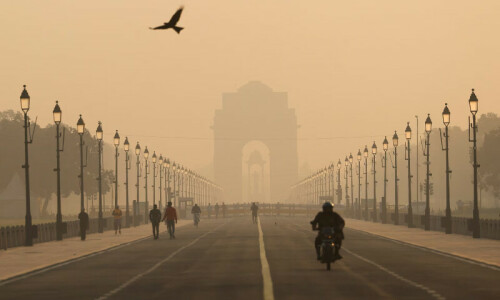
SANAA: A car bomb stuck a religious procession in a Shia militant bastion of north Yemen on Wednesday killing 15 people and rattling a fragile truce with the government, a militant spokesman and a tribal chief said.
“Seventeen people were killed and 15 wounded in the car bombing that targeted a Shia procession in Al-Jawf province,” militant spokesman Mohammed Abdulsalam told AFP by telephone.
Abdulsalam said the attack targeted the faithful who were preparing to mark Al-Ghadeer, the day on which Shias commemorate the anointment of Ali, one of the key figures of their faith, as successor to the Prophet Mohammad.
The anniversary has long been a source of contention between the Sunni and Shia branches of the faith and a tribal leader in the province told AFP that the bombing was the work of a Sunni militant loyal to al Qaeda.
“A suicide bomber driving a four-wheel drive vehicle blew himself up alongside the procession,” the tribal chief said.
“Among the dead was provincial tribal chief Hussein bin Ahmed bin Hadhban and his son,” he added.
Other tribal sources warned that the death toll was likely to rise. One told AFP it “could reach 30.”
Yemen is the ancestral homeland of al Qaeda leader Osama bin Laden and has been a growing focus for the operations of his worldwide jihadist network sparking a sharp increase in US military aid.
The mountains in the west of Al-Jawf province and neighbouring Saada have been a stronghold of Zaidi Shia militants in the uprising they have been waging against the Sanaa government on and off for the past six years.
The office of the UN High Commissioner for Refugees (UNHCR) warned on Tuesday that there had been an “alarming escalation” in fighting in the region, despite a truce signed between the militants and Sanaa in February.
The agency said that aid agencies and witnesses had reported that clashes between the militants and pro-government tribes had erupted in Saada province on November 13.
“At least 20 people have been killed reportedly and others wounded over the past 10 days in the worst violence in northern Yemen since the signing of the ceasefire in February,” UNHCR spokesman Andrej Mahecic said, speaking before the latest unrest.
The Yemeni army launched a major offensive against the militants in August last year sparking a new round of conflict that spilled over the border of the Arab world's poorest country with oil-rich Saudi Arabia.
That fighting ended with an uneasy truce in February mediated by gas-rich Qatar.
But it has been repeatedly shaken by clashes between the militants and pro-government tribes, and Qatar has been forced to undertake a series of mediation missions in a bid to broker implementation of the peace deal.
Clashes late last month killed two militant fighters and a pro-government tribesman, a tribal chief said.
The militants draw their support from among followers of the Zaidi branch of Shia Islam, who are in the minority in mainly Sunni Yemen but form the majority community in the north.
There have been six rounds of fighting between the militants and government troops since the uprising first erupted in 2004.
The UNHCR says that more than 300,000 people have fled the fighting, of whom just 20,000 have so far returned to homes in Saada province.














































Dear visitor, the comments section is undergoing an overhaul and will return soon.